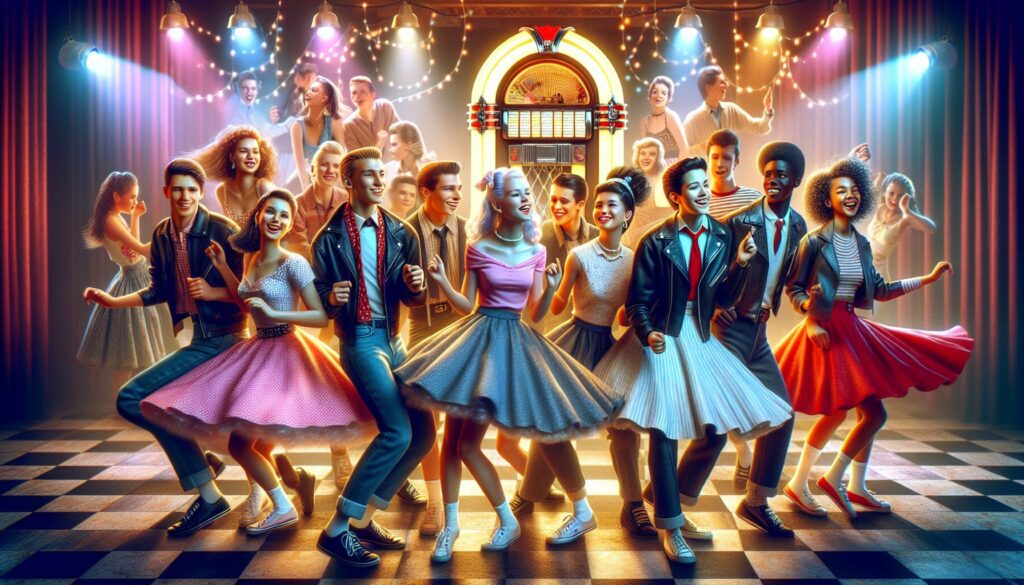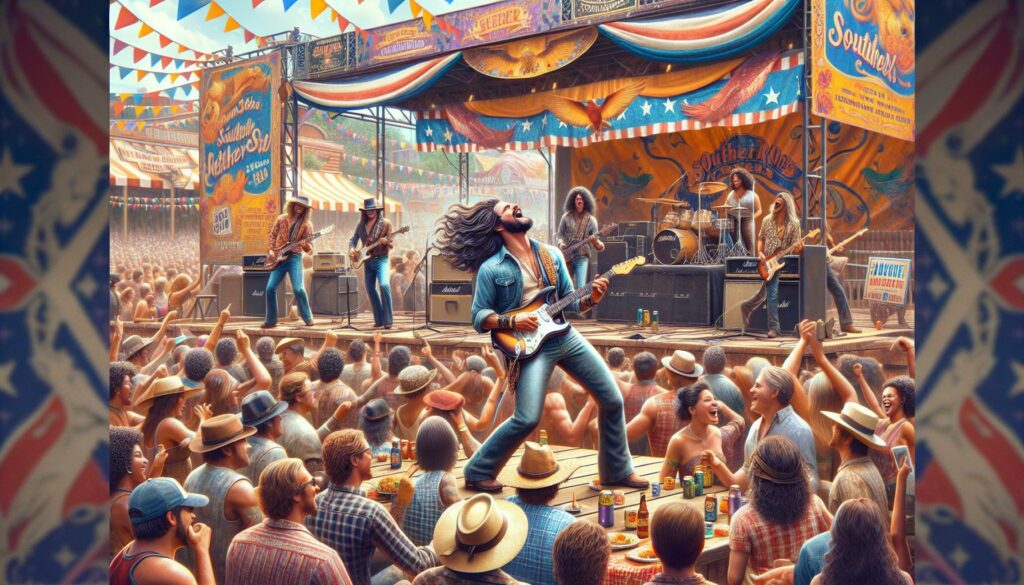Rock and roll music burst onto the scene in the 1950s, igniting a cultural revolution that would reshape American society. This electrifying genre didn’t just dominate the airwaves; it became a powerful voice for a generation yearning for change and expression. As I explore the effects of rock and roll, it’s fascinating to see how it bridged racial divides and brought youth culture to the forefront. The vibrant rhythms and rebellious lyrics of rock and roll resonated with teenagers, uniting them in a shared experience that challenged traditional norms. It wasn’t just about the music; it was a movement that influenced fashion, language, and social attitudes. So, what was one effect of rock and roll music on u.s. society during the 1950s? Join me as I delve into one significant effect of rock and roll on U.S. society during this transformative decade.
- Cultural Revolution: Rock and roll emerged in the 1950s as a transformative genre that revolutionized American culture, becoming a powerful voice for youth and social change.
- Racial Integration: The genre played a pivotal role in bridging racial divides and fostering desegregation, as artists from diverse backgrounds appealed to broad audiences and encouraged mixed-race gatherings.
- Youth Identity Formation: Rock and roll influenced the development of a distinct youth culture, promoting values of rebellion, individuality, and self-expression that resonated with adolescents.
- Shifts in Gender Roles: The genre challenged traditional gender roles, empowering female artists and encouraging both men and women to express a wider range of emotions and identities.
- Economic Impact: Rock and roll significantly boosted the music industry, leading to increased record sales and a thriving market for youth-targeted fashion and consumer goods.
- Legacy of Change: The cultural impact of rock and roll during the 1950s laid the groundwork for future musical movements and ongoing social transformations in American society.
What was One Effect of Rock and Roll Music on U.S. Society During the 1950s?
Rock and roll emerged in the 1950s as a revolutionary genre that reflected and shaped American culture. This music style encapsulated the spirit of the times, influencing various aspects of society.
Origins of Rock and Roll
Rock and roll originated from a fusion of rhythm and blues, country, gospel, and jazz. Pioneering artists like Chuck Berry, Little Richard, and Elvis Presley blended these genres to create a distinctive sound. Berry’s guitar riffs and energetic performances, along with Richard’s flamboyant style, defined the genre. Additionally, the integration of African American musical traditions into mainstream entertainment marked a significant cultural shift, challenging societal norms and paving the way for future musical developments.
Key Artists and Influences
Rock and roll’s rise was driven by several key artists and their influences.
- Chuck Berry: Berry’s guitar solos and clever lyrics resonated with youth, making him a central figure in the rock and roll scene.
- Elvis Presley: Often called the “”King of Rock and Roll,”” Presley’s charisma and blending of styles brought widespread popularity to the genre.
- Little Richard: Richard’s high-energy performances and bold persona challenged stereotypes in a conservative society.
- Buddy Holly: Holly introduced a more melodic sound, influencing future rock musicians with his songwriting and innovative recording techniques.
These artists not only defined the music but also shaped fashion, language, and ideologies, creating a cultural phenomenon that galvanized youth during the 1950s.
Cultural Impact on American Youth
Rock and roll music in the 1950s significantly shaped the cultural landscape for American youth. It provided a soundtrack for a generation seeking identity, freedom, and expression.
Shaping Youth Identity
Rock and roll influenced the formation of youth identity by promoting values of rebellion and individuality. Lyrics often addressed themes like love, freedom, and social issues, resonating with teenagers. Artists such as Chuck Berry and Elvis Presley embodied a youthful defiance that inspired young people to embrace their uniqueness. It fostered a sense of belonging within a community, uniting teenagers across different backgrounds. The genre’s energetic rhythms and bold style encouraged youth to express themselves through fashion and attitudes, marking a departure from previous conservative norms.
The Birth of Teen Culture
Rock and roll catalyzed the birth of a distinct teen culture, characterized by new social dynamics and consumer behaviors. The music industry began targeting teenagers as a key demographic, leading to the emergence of teenage magazines, fashion trends, and dedicated radio stations. Drive-in theaters and sock hops became popular venues for teens to engage with music, reinforcing their cultural presence. Icons like Elvis set trends not just in music but also in lifestyle, establishing a framework for youthful expression and leisure activities. The combination of music and cultural events connected youth nationwide, reinforcing their collective identity and aspirations during the transformative decade.
Social Changes Triggered by Rock and Roll
Rock and roll instigated significant social changes in the United States during the 1950s. Its influence reached various aspects of society, reshaping cultural dynamics and challenging existing norms.
Racial Integration and Desegregation
Rock and roll served as an instrument for racial integration. Artists like Chuck Berry and Little Richard drew inspiration from African American musical traditions, appealing to a broad audience. The genre united music lovers from different racial backgrounds, fostering an environment where segregation diminished. Concerts and radio airwaves facilitated mixed-race gatherings, promoting desegregation in entertainment venues. As teenagers championed rock and roll, they embraced diversity, pushing against the boundaries of racial discrimination that had long defined American society.
Shifts in Gender Roles
Rock and roll altered traditional gender roles. Female artists, including Brenda Lee and Wanda Jackson, challenged societal expectations by presenting strong, independent identities. Their powerful performances encouraged women to express their desires and aspirations openly. Male artists, on the other hand, often displayed vulnerability through lyrics that explored love and emotion. This shift allowed both genders to step outside the confines of conventional behavior, promoting a more egalitarian perspective. The genre’s emphasis on youth and rebellion inspired a redefinition of femininity and masculinity, shaping a more progressive cultural narrative in America.
Economic Effects of Rock and Roll
Rock and roll music significantly influenced the U.S. economy during the 1950s, shaping the music industry and consumer culture in profound ways.
The Growth of the Music Industry
The emergence of rock and roll catalyzed explosive growth in the music industry. Record sales soared, with vinyl records becoming a staple for households across America. In 1955, sales of rock and roll records reached approximately $200 million, indicating the genre’s popularity. Independent record labels, such as Atlantic and Sun, flourished as they discovered and promoted new talent. This growth not only generated revenue but also created thousands of jobs in production, marketing, and distribution. Concert tours became critical revenue streams, leading to the establishment of larger venues and more sophisticated concert promotion techniques.
Influence on Consumer Culture
What was one effect of rock and roll music on u.s. society during the 1950s? Rock and roll also reshaped consumer culture by driving demand for related products. Teenagers, the primary audience for the genre, began to express their identities through fashion choices, music equipment, and automobiles. The rise of rock and roll led to the popularity of specific brands, such as record players and radios, with manufacturers targeting the youth demographic. Additionally, marketing campaigns around new artists not only promoted music but also aligned with the latest fashion trends, igniting a consumer frenzy. The intersection of music and consumerism created a vibrant market for merchandise, fashion, and promotional items, reinforcing the economic significance of the rock and roll movement in shaping consumer habits during the decade. Rock and roll music in the 1950s transformed American society in ways that still resonate today. It wasn’t just a genre; it was a movement that redefined youth culture and challenged societal norms. By fostering racial integration and promoting individuality, rock and roll created a new sense of identity among teenagers. The economic impact was equally significant as the genre spurred growth in the music industry and consumer culture. This vibrant era laid the groundwork for future musical innovations and cultural shifts. Ultimately, rock and roll became a powerful force that shaped not only the sound of a generation but also the very fabric of American life.



